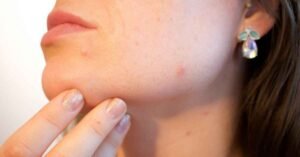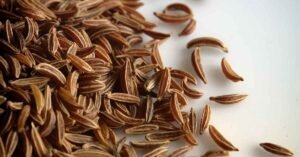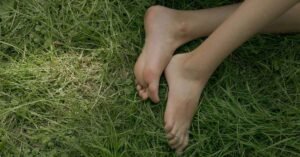
What is a Seed Corn on Foot?
A seed corn on foot is a small, hardened area of skin that forms due to repeated friction or pressure. It usually appears on the bottom of the foot, especially in weight-bearing areas. Unlike calluses, seed corns are typically small, circular, and can be painful when pressed.
Causes of Seed Corn on Foot
Understanding the root causes of seed corn on foot can help prevent and treat them effectively. The most common causes include:
- Friction and Pressure: Wearing tight shoes, walking barefoot, or standing for long periods can create excessive pressure on the feet.
- Dry Skin: Lack of moisture can cause skin to harden, making it more prone to forming corns.
- Poorly Fitted Footwear: Shoes that are too tight or too loose can contribute to constant rubbing and friction.
- Abnormal Foot Structure: Conditions like flat feet or high arches can lead to uneven pressure distribution, increasing the risk of corns.
- Walking Barefoot: Continuous contact with rough surfaces can lead to corns, especially on the ball of the foot and toes.
Seed Corn vs. Callus vs. Plantar Wart: Key Differences
| Feature | Seed Corn | Callus | Plantar Wart |
| Size & Shape | Small, circular, and well-defined | Larger, irregularly shaped | Can be small or large, often with black dots |
| Pain Level | Painful when pressed | Usually painless | Can be painful, especially when walking |
| Cause | Friction & pressure | Continuous pressure & rubbing | Caused by HPV virus |
| Location | Bottom of the foot | Any part of the foot | Usually on the heel or toes |
| Treatment | Exfoliation, moisturizers, and pads | Exfoliation & padding | Requires antiviral treatments |
Symptoms of Seed Corn on Foot
| Symptom | Description |
| Small, hard bump | Round, hardened area on the foot |
| Pain or tenderness | Discomfort when walking or pressing |
| Dry, flaky skin | Rough texture around the corn |
| Yellowish/whitish skin | Hardened, discolored skin patch |
How to Remove Seed Corn on Foot Fast
If you’re dealing with a painful seed corn on foot, here are the best treatments to remove it quickly:
1. Soak and Exfoliate

- Soak your feet in warm water for 10-15 minutes to soften the corn.
- Use a pumice stone to gently exfoliate the dead skin.
- Moisturize with a thick foot cream to keep the area soft.
2. Over-the-Counter Treatments
| Treatment | Effectiveness |
| Salicylic Acid Pads | Helps dissolve hardened skin |
| Corn Pads | Protects affected area from friction |
| Urea Cream | Softens and hydrates skin |
3. Home Remedies for Seed Corn on Foot
- Apple Cider Vinegar: Apply a soaked cotton ball on the corn and leave it overnight.
- Baking Soda Paste: Mix with water and apply to exfoliate the dead skin.
- Castor Oil: Helps soften and reduce corns naturally.
- Aloe Vera Gel: Hydrates and heals irritated skin.
4. Proper Footwear & Insoles

- Wear well-cushioned, properly fitted shoes.
- Use orthotic insoles for even weight distribution.
- Avoid high heels or tight shoes that add pressure to the foot.
Prevention Tips for Seed Corns on Feet
To keep seed corns from coming back, follow these simple steps:
| Prevention Tip | Benefit |
| Moisturize daily | Prevents skin dryness |
| Wear well-fitting shoes | Reduces friction and pressure |
| Use protective pads | Shields feet from rubbing |
| Trim nails properly | Prevents toe pressure |
| Change socks regularly | Keeps feet dry and healthy |
When to See a Doctor
If home remedies don’t work or the corn becomes infected, consult a podiatrist. Signs you may need professional treatment include:
- Persistent pain or discomfort
- Signs of infection (redness, swelling, pus)
- Difficulty walking due to foot pain
FAQs About Seed Corn on Foot
- Can seed corns go away on their own?
Seed corns may shrink over time if friction is reduced, but they usually need treatment to fully disappear. - What is the fastest way to get rid of a seed corn?
Using salicylic acid pads, soaking feet, and exfoliating with a pumice stone can help remove them quickly. - How do I know if I have a seed corn or a wart?
Seed corns are hard and painless when squeezed from the sides, while warts may have black dots and hurt when pressed. - Can seed corns come back after removal?
Yes, if the cause (friction, pressure, or poor footwear) is not addressed, they can return. - Does soaking feet in vinegar help with seed corns?
Yes, apple cider vinegar can help soften the corn and make it easier to remove. - Should I see a doctor for a seed corn?
If home treatments don’t work, the corn is painful, or signs of infection appear, consult a podiatrist. - Are seed corns contagious? No, they are not contagious. They form due to pressure and friction, not an infection.
- Can I cut off a seed corn at home? No, cutting a corn yourself can lead to infections. It’s best to use safe treatments like exfoliation and moisturizing.
- How long does it take for a seed corn to go away? With proper care, it can take 1-4 weeks to heal, depending on the severity.
- Can diabetics get seed corns? Yes, diabetics are more prone to foot issues. They should check their feet regularly and consult a doctor if they notice any changes.
Final Thoughts
Seed corn on foot can be painful, but with the right treatments, you can get rid of them quickly. By using proper foot care, home remedies, and preventative measures, you can keep your feet healthy and pain-free. If symptoms persist, don’t hesitate to see a podiatrist for expert advice!














